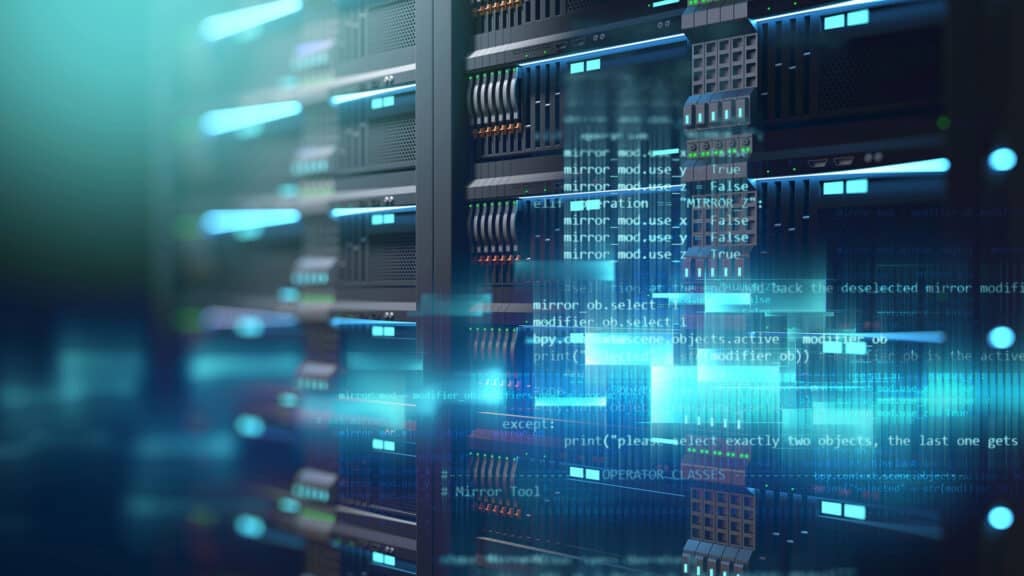The News: HP Inc. and its subsidiaries (NYSE: HP) announced 2nd quarter (Q2) 2024 results on May 29th. Summarizing results, HP beat consensus expectations (of $12.61 billion for the quarter) with net revenues of $12.8 billion. While that number represents a 0.8% year-over-year (YoY) drop, in great part due to continued contraction in the printer segment (HP saw its Print business drop 8% YoY to $4.4 billion), Personal Systems (HP’s PC business unit) was up 3% YoY, further evidence of the stickiness of the PC segment’s recovery. “We delivered a solid quarter and first half, and unveiled an innovative portfolio of solutions designed for the AI and hybrid era” added Enrique Lores. “We have a clear strategy and are well positioned to drive profitable growth across our business.” Read the full press release here.
HP Q2 2024 Earnings: HP’s PC Refresh Supercycle Opportunity Comes Into Clearer Focus
Analyst Take: HP’s Q2 earnings didn’t pack any major surprises but did drop hints about some of the company’s most important opportunities as we head into H2 2024 and 2025. On the Personal Systems side, disruption from next-gen AI PCs, and particularly newly unveiled Copilot+ PCs, should begin driving the PC segment’s refresh supercycle forward in Q3 and Q4, with HP being well positioned to take full advantage of the market shift. On the Printer side, the introduction of AI-powered features and UX, sustainability-inspired innovation, and strong PC attach rates synched to the PC refresh supercycle could, together, contribute to a turnaround, but it is still too early to tell how well HP will navigate the opportunity, or when we will start seeing a return to positive YoY numbers.
How and Why the Impending AI-Driven PC Refresh Cycle Reset Will Positively Impact HP’s Personal Solutions Business
The three questions I get asked the most these days are “what are AI PCs,” “why should I buy one,” and “why has the PC segment’s recovery been so slow to start?” Since these are all relevant to HP’s PC business, let me answer them to provide some context for how to interpret HP’s Personal Systems business unit’s trajectory.
For the sake of simplicity, let’s define AI PCs as the next evolutionary step for PCs. As AI continues its proliferation across all tech segments, chipmakers are increasingly designing chipsets and platforms capable of delivering powerful on-device AI capabilities. We have been seeing this trend in Mobile (particularly in the Android space), and now we are seeing it enter the PC segment as well, with Intel introducing first-gen AI PC Core Ultra 7 and Core Ultra 9 chipsets last year, and Qualcomm introducing its revolutionary Windows-on-Arm Snapdragon X PC platform with Microsoft earlier this month under the AI-forward “Copilot+ PC” branding.
AI PCs generally come equipped with a CPU, GPU, and NPU (neural processing unit), and are designed to be able to take on AI workloads (training and inference) right on the device, without requiring a connection to the Cloud. Right now, because AI-capable PCs are new, we can reasonably divide the PC market between pre-AI PCs (traditional PCs) and AI PCs. One can reasonably predict that a decade from now, all new PCs will be AI PCs. In other words, AI PCs will begin replacing traditional PCs this year, and that trend will continue for the foreseeable future. In fact, HP CEO Enrique Lores provided some context on this point, highlighting that about 10% of PCs sold in 2024 would be AI PCs, with that number likely jumping to 60% in the next three years.
While the use case and value proposition for AI PCs hasn’t been particularly well articulated by anyone yet, the answer to our second question “why AI PCs?” comes in two parts: Future-proofing for AI and raw performance improvements. On the performance improvements track, what AI PCs bring to PC users is simply a better system with radically better performance benchmarks. The addition of an NPU to the CPU and GPU allows AI PCs to more efficiently manage processes and tasks, delivering faster performance and better multithreaded experiences while also being more power efficient (translating into longer battery life). These forward leaps in performance improvements are particularly noticeable among PCs powered by Qualcomm’s new Snapdragon X Elite and X Plus SOCs, thanks to their Arm architecture. For reference, the first wave of Windows Copilot+ PCs is exclusively made up of Snapdragon X-powered PCs for a reason: Only Qualcomm’s Windows-on-Arm PC chipsets can currently deliver 40+ TOPS on the NPU, multi-day battery life, and faster processing than Apple’s M3-powered MacBook Air (as demonstrated by the Microsoft Surface team at the company’s Build event earlier this month).
What this means for technology users and ITDMs is simple: Even without injecting AI use cases into the value proposition of Copilot+ PCs, these devices’ performance characteristics are such a radical improvement over traditional and pre-Copilot+ PCs that they are worth the upgrade. Aside from the more enjoyable UX of having a faster computer with 20+ (and in some instances 30+) hours of battery life, IT departments are also looking at potentially lower TCO, lower energy costs, fewer service issues, enhanced security, and so on.
As for future-proofing for AI, here is where the market is today: The killer app that will make the value proposition of AI PCs crystal clear to users remains elusive but we can already see where the potential for these new PCs might start gaining traction: Look no further than AI assistants and agents. Because these PCs have powerful on-chip AI capabilities, they can inject intelligence into any task to make them easier and quicker to complete. With these PCs, tasks that might have previously taken hours or even days, such as building presentation decks, organizing spreadsheets, and creating reports might take only minutes. Whether users will use their reclaimed time to be more productive or work fewer hours is up to them, but AI PCs (in partnership with Microsoft and other platform and app vendors), promise to deliver that kind of UX improvement right away, with a lot more to follow. The idea is essentially to start future-proofing for AI now by upgrading the hardware, and wait for the long tail of AI-forward software and apps to populate the ecosystem organically. Note that Copilot+ PCs are capable of running these agents directly on the device instead of relying on an internet connection and Cloud-based agents. This opens the door to far more natural and latency-free interactions with agents and AI assistants for smoother and more effective workflows, maintains feature continuity whether the PC is connected to the internet or not, and because so much of the user’s training and inference data can now remain on the PC, Copilot+ PCs provide obvious data security advantages over traditional PCs.
Another important footnote that HP may be able to leverage is that because Microsoft is scheduled to end support for Windows 10 in October of 2025, IT departments are already starting to focus on that generation of traditional PCs’ next upgrade cycle.
As for the most important question of the three, “why has the PC segment’s recovery been so slow to start,” it’s a mix of several factors, but one of the main ones is this: Every ITDM has known that AI PCs were coming for well over a year now, but the category needed to prove itself before the vast majority of them would take a chance on it. On the Intel side, the question was basically whether or not performance improvements would be worth the added cost and potential wrinkles. On the Windows-on-Arm side, the questions were about critical software compatibility and Windows support. The introduction of Copilot+ PCs this month, which includes PCs from every major PC OEM, including HP, helped answer all of those questions.
With Copilot+ PCs becoming available this summer (and Intel presumably shipping its next-gen AI PC chipsets next year), the transition to Copilot+ AI PCs should begin in earnest in H2 of this year and accelerate into 2025.
The implications for the PC segment’s recovery should be fairly clear: the market has been holding its breath and waiting for this new generation of PCs to hit the market before making any major upgrade decisions. This wait-and-see strategy has likely loaded the brakes on the segment’s recovery, but as ITDMs and their buyers begin to release the tension on that brake with pilots and POs, we should see PC shipments start to accelerate up in the fall and more than make up for the last two quarters of slower-than-expected rebound.
Broadly, this transition to AI PCs should reset the refresh cycle for the PC segment, and potentially impact PC refresh rates. That is the theory of the case anyway, and yes, HP is well positioned to take advantage of this transition.
How HP will ultimately differentiate itself in this new PC market remains to be seen, but its portfolio of AI PCs looks on target to suit the needs of every user tier. Because of this, I suspect that HP’s Personal Solutions revenue next year will be significantly higher than it was this year, and I wouldn’t be surprised if the business unit saw strong double-digit growth YoY.
AI and Sustainability are Also Creating New Opportunities for HP’s Printer Business, but Momentum isn’t There Yet
Watching HP’s Printer business struggle quarter after quarter is a bit of a head-scratcher for me. On the one hand, the trend toward paperless (or near-paperless) probably isn’t going to be reversed anytime soon. Consumers and commercial print customers just don’t print as much as they used to, and that is a reality that HP can’t escape. Having said that, Printers still bring in $4+ billion quarterly, so the segment is still very much alive.
Printing has also radically changed in the last few years, and digging into HP’s portfolio, I have found two parallel tracks of opportunity for the segment If HP can manage to communicate its value proposition clearly to its customers. The first, obviously, is AI as a UX disruptor, which I expect will become part of HP’s Printer value proposition before long. The second is non-AI product innovation, which hinges a great deal on HP’s ability to combine sustainability practices and product innovation. I continue to be impressed with HP’s focus on turning what could simply be a feel-good story about recycled ocean plastics, recyclable materials, and its circularly sustainable printer cartridge model into concrete design, performance, and ROI optimization with real-world, tangible benefits to users.
In other words, HP is doing everything right on the product side and executing well there. What may be missing from the equation now is a mix of (1) increased market awareness for how much better printers and the printing experience have become, (2) re-energizing PC-Printer attach rates, and (3) tying those attach rates to the PC refresh supercycle we just discussed. Easier said than done, and the downward trend in Printer sales probably won’t be reversed overnight, but if HP plays its hand well, I see a fairly clear path back to YoY growth for its Printer business once the PC refresh cycle starts to slip into gear.
In Summary
Q2 2024 felt a bit like the calm before the storm (a positive storm) for HP: Incremental changes QoQ, Personal Systems business up 3% YoY, and overall revenue for the quarter coming in above consensus expectations. Print, on trend, was down again, but HP is in a good position to do something about that in the next 12 months. All eyes should be on the AI PC transition as the company goes into Q3, especially in the enterprise, where demand for Intel-based Core Ultra AI-ready PCs and next-gen Windows-on-Arm Snapdragon X-powered Copilot+ AI PCs should begin moving PC numbers toward 5%-8% YoY growth, and perhaps even setting up Q4 for double-digit growth. Enrique Lores’ prediction that 10% of PCs sold in 2024 will be AI PCs aligns with our expectations for the next two quarters, as does the notion that 60% of PCs sold in the next three years will be AI PCs. If HP plays its cards right, the upcoming PC supercycle could also turn out to be the tide that lifts all boats, including HP’s Printer business.
Disclosure: The Futurum Group is a research and advisory firm that engages or has engaged in research, analysis, and advisory services with many technology companies, including those mentioned in this article. The author does not hold any equity positions with any company mentioned in this article.
Analysis and opinions expressed herein are specific to the analyst individually and data and other information that might have been provided for validation, not those of The Futurum Group as a whole.
Other Insights from The Futurum Group:
HP Q1 2024 Earnings: The Calm Before the Start of the AI PC Supercycle
New Snapdragon-Powered Copilot+ Windows PCs Redefine the PC Market
HP’s New Workforce Solutions for the Modern Workforce – The Six Five On the Road
Author Information
Olivier Blanchard is Research Director, Intelligent Devices. He covers edge semiconductors and intelligent AI-capable devices for Futurum. In addition to having co-authored several books about digital transformation and AI with Futurum Group CEO Daniel Newman, Blanchard brings considerable experience demystifying new and emerging technologies, advising clients on how best to future-proof their organizations, and helping maximize the positive impacts of technology disruption while mitigating their potentially negative effects. Follow his extended analysis on X and LinkedIn.




